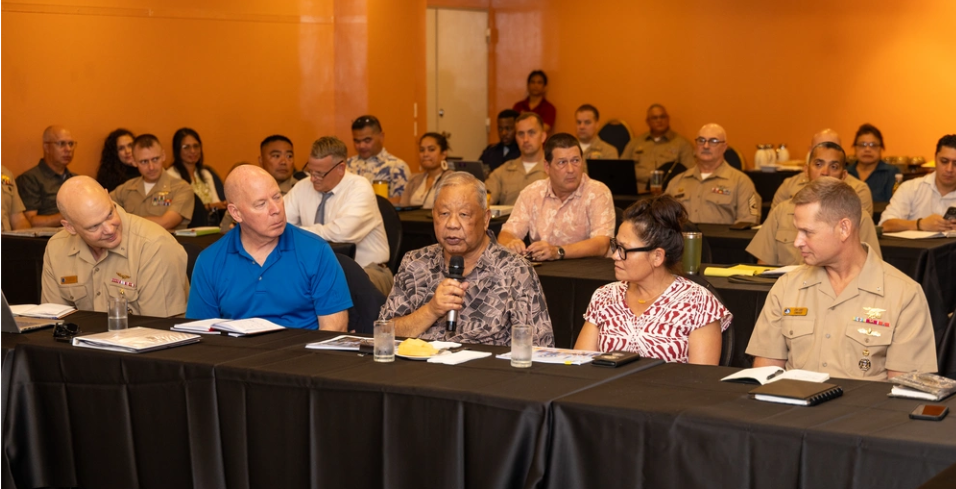Diabetes-fighting program for Pacific Islanders looks to continue success
- Admin

- Mar 15, 2024
- 4 min read

By Frank Whitman
Pacific Islanders taking part in an anti-diabetes program aimed at, and boasting success with, islanders met in early February in Guam to discuss ways to continue the program despite the expiration in September 2023 of its six-year grant from the Centers for Disease Control and Prevention.
The Pacific Islanders Diabetes Prevention Program is operated by the Association of Asia Pacific Community Health Organizations at 11 sites across the Pacific and in the U.S. mainland. The February meeting was funded with a CDC planning grant.
“Over the six years, it’s really proven itself as a successful program,” said Jen Lee, deputy director of AAPCHO. Representatives at the meeting focused on continuing the program with the original group as well as finding ways to bring in more organizations looking to duplicate the success.
The focus of the 12-month program is to identify islanders at risk of developing diabetes, and promote lifestyle changes, primarily in diet and exercise routines, based on input from the participants and evidence of effectiveness. These most often include cultural practices. Data, particularly records of weight loss, are meticulously kept as evidence of the success of the program. Weight loss of 5 percent of body weight or more is considered to be “evidence to indicate that you can stave off or prevent diabetes,” Lee said.
Exercise activities are often suggested by participants. These include Zumba, walking groups, gardening groups and cooking classes. “So it’s not just a class,” Lee said. “The main thing that’s unique is these folks who have done the class have the highest retention rate in this program in CDC - upwards of 60 percent retention, which is kind of amazing to have that over a year and have people still want to be in this class.”
ADVERTISEMENT
Such programs don’t usually have a life of their own, Lee said. “But the coaches are from the community.” She cited the example of a coach who was also a pastor who worked with congregation members to change the food that was offered to the congregation after service. They cut out soda, fried food and other unhealthy fare in favor of fresh and healthy local foods. “Folks are motivated,” Lee said. “They’re excited; they own it.”
The organizers have also translated the curriculum into the languages of the participants. These include Kosraean, Chuukese, Palauan, Tongan, Samoan and CHamoru.
“A vision of the program (is) to train coaches in language to deliver this program so a participant can receive this program all in (his or her) language,” Lee said. “The program is really built on investing in lifestyle coaches. They’re these amazing folk who go through a certification process with us and with CDC so they’re comfortable with 24 modules talking about nutrition and exercise. The beauty of it is really the connection that the coaches make and the social connection, less so the actual curriculum.”
Program sites include Majuro, Kwajalein and Ebeye in the Marshall Islands; Springdale, Arkansas (There are about 11,000 Micronesians in Arkansas as of 2022); Kosrae; Chuuk; Palau; the Northern Mariana Islands; Utah; and Maui, Hawaii.
Guam Community Health Centers recently joined AAPCHO and Zita Pangelinan, acting Guam Community Health Centers CEO, was selected to be an AAPCHO board member.
About 4,000 individuals have been enrolled in the program since it began, Lee said. The Arkansas site has the largest contingent with 915 individuals enrolled as of the end of 2022. Of those, 533 completed the program and 332 reduced their risk of diabetes.
The average body weight loss was 6.63 percent with 298 losing 5 percent of body weight or more, according to the Arkansas Coalition of Marshallese Impact Report for the program through 2022.
The NMI site had 150 participants through 2022, of whom 26 completed the program with an average body weight loss of 4.54 percent.
In addition to the effect on individuals and families, the success of the program is economically beneficial to the community as funds that might otherwise be used for expensive dialysis and other treatment can be used for other purposes. Millions and millions of dollars are lost for health care in the jurisdictions “because the noncommunicable diseases are so prevalent,” Lee said.

Going forward, the organization will put more focus on its role as an “umbrella hub” where AAPCHO is the hub providing needed support to help sustain the community-based programs that “deliver the program but may not individually have the capacity to run all this data to CDC or to keep up with all the training,” she said.
Among the issues discussed during the February meeting were: What components do organizers want to see? How would they generate revenue for it to continue? At what reimbursement levels? What is unique to each area’s circumstances and resources? How do they maintain billing services, training and continuing education for coaches?
“It’s a long process; we’re in a building phase,” said Nia Aitaoto, lead consultant for AAPCHO and one of the facilitators, with Lee, of the February meeting. She emphasized the importance of building consensus. (We want to) iron out disagreements by ourselves without any external inputs. What we want to get from here is agreement, but also commitment. … (Then we want to) identify what is that commitment and how that commitment will show up and how we check on each other and ourselves.”






